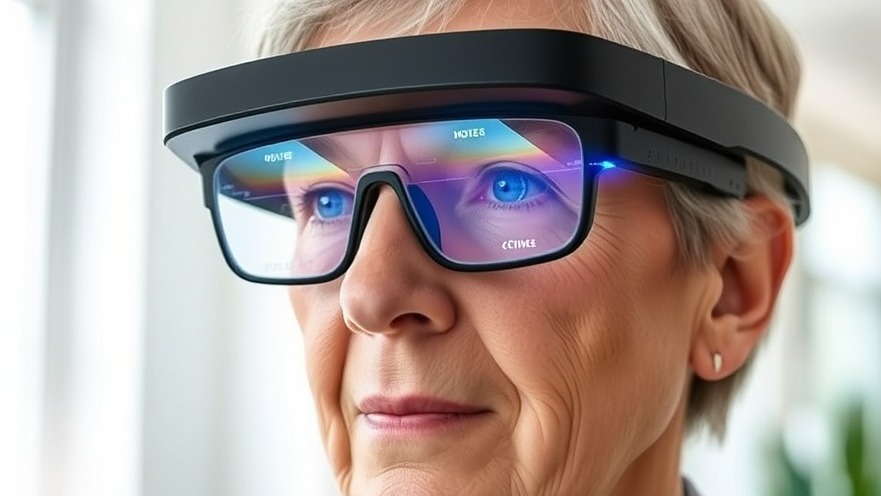
Transforming Vision with Technology: A New Hope for Patients
The world can be unforgiving for individuals suffering from vision impairment, particularly those facing conditions like partial hemianopsia. Glenn Calverley, a 57-year-old stroke survivor, epitomizes the challenges faced by many – lost colors, imaginary spots, and the inability to perceive important elements in the peripheral vision. However, a groundbreaking development at the University of Alberta aims to change this narrative by pioneering mixed reality glasses designed to restore sight for those with partial vision loss.
Understanding Partial Hemianopsia and Its Impact
Partial hemianopsia, characterized by the inability to see half of the visual field in both eyes, is commonly caused by damage to brain pathways rather than the eyes themselves. Statistics from the American Stroke Association reveal a staggering reality: 30% of stroke survivors experience vision loss, leaving many to navigate their daily lives with a constant fear of obstacles and hazards.
The Innovative Technology Behind Mixed Reality Glasses
The University of Alberta's research team has developed an innovative solution that utilizes a head-mounted camera to capture the surrounding environment, transforming the visual input into a format that can be perceived by patients with partial vision loss. This technology, referred to as "picture-in-picture navigation" by project lead Edsel Ing, effectively compresses the visual environment into the areas of unaffected vision, enabling a more comprehensive view of one's surroundings. The aim is not just to enhance functionality but to revive a sense of normalcy in activities like walking and socializing.
Potential Benefits for Health Practitioners to Consider
As concierge health practitioners remain vigilant about advancements that may influence patient care, it is essential to evaluate the implications of this technological innovation. This solution offers significant benefits:
Enhanced Patient Safety: By allowing hemianopsia patients to perceive their entire environment, the glasses minimize accidents and enhance independence.
Improved Quality of Life: These glasses can restore some semblance of normalcy to patients’ daily lives, positively affecting mental health.
Cost-effective Solutions: With the software freely available for customization, practices can leverage technology without a hefty investment burden.
Addressing Challenges: Misconceptions and Limitations
While excitement surrounds this innovation, understanding potential challenges is equally critical. Scepticism regarding the effectiveness of technology in treating visual impairments often prevails. Misconceptions include the belief that glasses alone can replace traditional rehabilitation treatments. It's important for healthcare professionals to clarify that these glasses are supplementary tools that should be integrated into comprehensive therapeutic plans. Additionally, the effectiveness may vary among patients, necessitating personalized adaptations of the software.
Expanding Opportunities for Research and Development
The launch of these mixed reality glasses opens the door for further research and development, with opportunities for improvements and additional features. The incorporation of machine learning algorithms could refine user experience, adapting the visual presentation based on individual needs. Furthermore, engaging with tech developers ensures these products continue to evolve, enhancing their overall effectiveness.
Taking Action: Embrace New Technologies for Patient Care
In an ever-changing technological landscape, it is vital for healthcare practitioners to remain proactive in integrating groundbreaking solutions that offer tangible benefits to patients. By adopting advancements like mixed reality glasses and encouraging customization in treatment plans, practitioners can guide patients toward a safer and more fulfilling life.
As we enter a new era of healthcare driven by technological innovations, the potential for improving patient outcomes is limitless. Continuous engagement with these developments is crucial in ensuring that both practitioners and patients benefit from the exciting possibilities.
Take the next step by exploring how your practice can incorporate these advancements and enhance the quality of care provided to your patients with partial vision loss.
 Add Row
Add Row  Add
Add 




Write A Comment